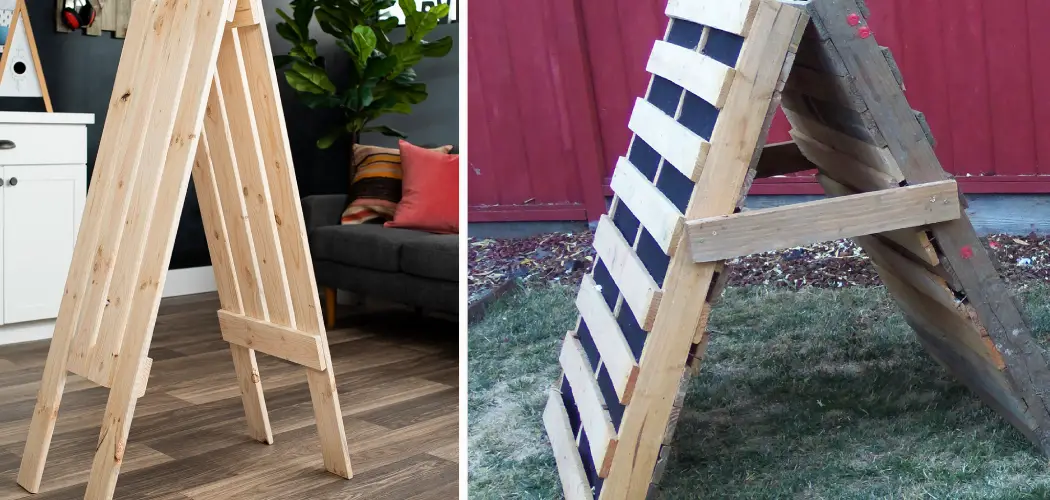As a gardener, protecting your precious shrubs from the elements and potential harm becomes a priority. Crafting your own wooden shrub protectors provides a hands-on solution that not only safeguards your plants but also adds a rustic touch to your garden.
In this guide, we’ll explore the art of creating wooden shrub protectors, offering a blend of functionality and aesthetic appeal. From selecting the right wood and understanding the dimensions to incorporating thoughtful design elements, we’ll take you through the step-by-step process of how to make wooden shrub protectors.

Whether you’re aiming to shield your shrubs from winter frost, curious critters, or accidental bumps, these DIY protectors become a personalized addition to your gardening toolkit. Join us on this journey to not only nurture your green companions but also express your creativity through practical and visually pleasing wooden shrub protectors.
Benefits of Using Shrub Protectors
Shrub protectors are a great way to keep your plants safe and healthy throughout the year. They provide a layer of protection against harsh weather conditions, pests, and other potential threats that could harm your shrubs. In this section, we will discuss some of the benefits of using shrub protectors.
Protection from Harsh Weather Conditions
One of the main benefits of using shrub protectors is that they provide protection against harsh weather conditions. During the winter, shrubs are particularly vulnerable to frost, snow, and freezing temperatures.
A layer of shrub protector can help insulate your plants and protect them from these elements. Similarly, during the summer months, a shrub protector can provide shade and prevent your plants from getting scorched by the sun. This protection helps your shrubs survive and thrive, even in extreme weather conditions.

Pest Prevention
Shrubs are susceptible to pest infestations, which can cause significant damage to your plants. By using a shrub protector, you create a barrier between your plants and pests, preventing them from reaching and damaging your shrubs. Additionally, some shrub protectors are made with insect-repelling materials, providing an extra layer of defense against pests. This can save you time and money on pest control measures in the long run.
Easy Installation
Shrub protectors are incredibly easy to install, making them a convenient option for any gardener. They come in different sizes and shapes to accommodate various types of shrubs and can be quickly set up in your garden. You don’t need any special tools or skills, making them accessible for both experienced and novice gardeners.
10 Methods How to Make Wooden Shrub Protectors
1. Build a Wooden Frame
Building a wooden frame is one of the most effective ways to protect shrubs from animals and other elements. Start by measuring the area around your shrub and then cut four pieces of wood to fit the space. Use screws or nails to attach the pieces together, forming a square or rectangle that will be used as the frame. Once you have built the frame, use stakes to secure it in place around the base of your shrub.

2. Place Chicken Wire
Chicken wire is another great way to protect your shrubs from animals and other elements. To do this, start by cutting pieces of chicken wire that are slightly larger than your wooden frame. Secure the chicken wire to the frame using staples or nails, ensuring that it is securely attached. This will help keep out small animals, such as rabbits and squirrels, while still allowing air and sunlight to reach your shrub.
3. Add Mulch
Adding mulch around your shrub can also help protect it from animals and other elements. Choose an organic mulch such as wood chips or shredded bark for best results. Spread a layer of mulch at least two inches thick around the base of your shrub, making sure not to cover any foliage or stems with it. This will help insulate the roots of your shrub while also preventing weeds from growing near it.
4. Plant Daffodils
Planting daffodils around your shrubs can act as a natural deterrent for animals looking for food in your garden. Daffodils contain a toxin called lycorine, which can make them unappetizing to some animals, so planting them around your shrubs can help keep them away from unwanted visitors looking for a snack!
5. Install Motion-Activated Sprinklers
Installing motion-activated sprinklers is another great way to protect your shrubs from unwanted visitors, such as deer or rabbits looking for food in your garden. When an animal enters the area, sensors detect their movement and activate sprinklers that spray water in their direction, scaring them away without causing any harm!
6. Put Up Fencing
Putting up fencing is another great way to keep animals out of areas where you don’t want them getting into trouble! Choose a fence that is tall enough so that deer cannot jump over it and be sure to install it securely into the ground so that small animals cannot dig underneath it either! You can also choose different types of fences depending on what type of animal you’re trying to deter; electric fencing works well against deer while mesh fencing works better against smaller critters like rabbits and squirrels!

7. Use Deer Repellents
Deer repellents are products made specifically designed to deter deer from entering certain areas in gardens or yards where they may cause damage or eat plants they shouldn’t be eating! There are many different types available on the market today ranging from sprays that smell bad (like rotten eggs) to granules that taste bad (like garlic). Be sure to read labels carefully before using any product on edible plants!
8. Plant Deer Resistant Shrubs
If all else fails when trying to protect certain plants in your garden from deer, consider planting deer-resistant varieties instead! Many species of native plants have evolved over time with natural defenses against being eaten by deer, such as thorns, bitter-tasting leaves, or tough stems; these include species like yucca, barberry, boxwood, holly, juniper, viburnum, and more!
9. Trim Branches Regularly
Trimming branches regularly is also important when protecting certain plants from being damaged by animals, such as deer, who may rub their antlers against branches in order to mark their territory or scratch an itch! Make sure you’re only trimming back dead branches, though – never trim live ones unless absolutely necessary – otherwise, you could end up damaging healthy growth on the plant itself, which could lead to even more problems down the line !
10. Utilize Natural Predators
Finally , one of nature’s best ways of keeping pests away comes in the form of natural predators ! Installing birdhouses , bat houses , mason bee houses , ladybug boxes , praying mantis egg cases , etc., are all great ways to encourage beneficial insects & wildlife into gardens, which can naturally control pest populations without resorting to harsh chemicals!
Things to Consider When Making Wooden Shrub Protectors
As a responsible gardener, protecting your plants from harsh weather conditions and pests is essential. While there are various options available in the market for plant protection, making wooden shrub protectors can be a fun and cost-effective DIY project. Not only does it add a personal touch to your garden, but it also allows you to customize the size and design according to your specific needs. However, before you start building wooden shrub protectors, here are a few things to consider:

- Materials: The type of wood you choose for making the protectors is crucial. It should be durable enough to withstand outdoor conditions and strong enough to provide adequate protection for your plants.
- Design: Wooden shrub protectors can be designed in various ways, each with its own benefits. For example, a simple frame design can provide enough air circulation for the plant while still protecting it from pests. On the other hand, a solid box design can offer more insulation and protection during colder months.
- Size: Depending on the size of your shrub, you’ll need to determine the appropriate dimensions for the protectors. It should be large enough to accommodate your plant while still allowing room for growth.
- Durability: Since wooden shrub protectors will be exposed to outdoor elements, it’s essential to make them as durable as possible. This includes using weather-resistant wood and sturdy construction techniques.
- Installation: Before making the protectors, consider how they will be installed in your garden. Will they need to be anchored to the ground or simply placed over your plants? This will determine factors such as weight and size.
Conclusion
In conclusion, there are many ways to construct wooden shrub protectors from online tutorials to hardware store kits. Beyond the practical applications of making one’s own wooden shrub protectors, the process can be a great comedic exercise for all ages. If you don’t feel up to the task of tackling this project alone, get friends and family involved or take a class at your local woodworking school.
Finally, be creative with your solutions and think outside the box! Try painting different shades onto each piece during assembly or add carvings during construction for some added flair – making these wooden shrub protectors entirely your own. Now you know how to make wooden shrub protectors! Why not give it a try?
You can check ti out Make Ghosts to Hang in Trees

